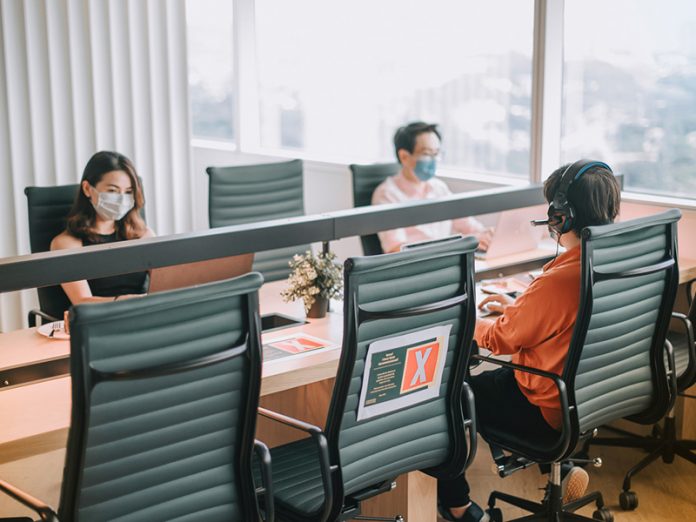By David Kelly
The current COVID-19 situation drastically changed the way we perceive a traditional workplace and remote working. Due to government-imposed restrictions and measurements, many companies allowed their employees a flexible working option that allows flexible working time and working from home. Did you know that 86% of employees like the idea of remote working and would love to continue working that way, compared to 46% before the COVID-19 situation?
Due to the complexity of specific roles, employers are slowly implementing social distancing, hybrid offices, and other ‘convenient’ ways to return their employees to offices. As a business owner or manager, it’s crucial to plan a transition phase and communicate with your employees when coming back to the office. Let’s find out what discussions you should have with your employees when coming back to the office after a long break. It’s evident that people need time to adapt to new situations.
Communicate and implement a ‘return-to-office’ plan
Since restrictions are prone to changes, it’s important to continually communicate with your employees and managers, and based on the inputs, create and implement a ‘return to office’ plan. A well-structured plan will make the whole transition process way easier for your employees.
- Follow the guidelines and safety measures from the government – before creating a plan, it’s essential always to have updated information when it comes to safety measures and restrictions. Always have your employees’ safety and health as a priority and never rush with the implementation of the plan if it can disrupt the health of individuals.
- Communicate employees’ concerns about their return – never neglect employees’ problems and opinions as you should aim to make a transition easy and safe for all sides. Listening and accepting employees’ advice, concerns, and ideas will result in a better workplace climate that will satisfy everyone.
- Understand the difference and be flexible – some employees can’t wait to return to their workplace as they prefer a social environment to be more productive. On the other hand, specific groups of people are more vulnerable to the virus, raising concerns, and increasing the risks of spreading the virus. Always be open to discussion and offer flexible solutions when needed.
Discuss social distancing
COVID-19 is a virus that transmits through direct contact with an infected person, and that’s the main reason businesses have to organize social distancing in their offices. For instance, brainstorming or conference room meetings as we know it is far behind us, and you have to find a creative solution for it. Social distancing in the office is one of the most critical aspects of your back to work plan. It’s important to communicate every detail with returnees for keeping everyone safe and healthy and your business running.
- Make sure to follow the updated government directives and measures as the situation constantly changes.
- Communicate restrictions for employee gatherings, meetings, or conferences – move all non-essential gatherings online while keeping physical appointments to a bare minimum. Don’t forget to organize and communicate the entrance and exit cleaning practices to ensure the highest protection level.
- If you have common rooms in your office areas such as the kitchen, or communal rooms, it’s essential to clean all the common spaces and avoid non-essential socializing.
Changing the office layout
Employees who are returning to the office may experience a stressful period of adaptation, especially as their and others’ health is at risk. To soothe the stress and risk of spreading the virus, it’s crucial to plan the office layout changes. Having many people share the same room, the same desk, and without a proper ventilation system increases infection risks. You should discuss and find a way of creating more space in the office, so your employees can passively respect social distancing even while working.
There are many creative solutions for creating a safe office layout, such as a hybrid workplace. It features a combination of traditional office work and remote working to achieve up to 30% of space occupancy. The low office occupancy and clear social distancing measures will create offices where employees can keep a distance during their shifts without risking their health. For instance, an innovative project called 6 feet office implements social distancing measures in a creative way that ensures all employees are at least 6 feet away from others during their shifts. They’ve achieved it through various signs, walking paths through the office areas, and trained employees who educate all office users.
Avoid non-essential social customs
It’s easy to forget social distance measures, especially when you’re sharing the same office with colleagues for many years. Avoiding some social customs such as shaking hands can be seen as disrespectful, so it’s crucial to communicate the reasons behind it effectively. It’s recommended to communicate and educate your employees about the spread of the virus and reasons for implementing ‘no-physical contact’ policies at the workplace.
On top of communication, visible physical signs at the entrance of specific rooms might work well. If you have a design department, it might not be harmful to introduce some humour to restriction and safety measurement signs as a bit of humour and laugh can reduce stress levels.
Introduce different shift and team organization
Creating effective working schedules and shifts that will keep more room in the offices is a must. Introducing hybrid shifts where employees work part-time in the office and part-time at home might be an efficient solution.
For instance, teams should be physically present while discussing and implementing strategic parts of the projects. During the operative work, employees can perform tasks remotely. It’s important to set up a communication channel for remote teams so they effectively report their work progress and get support if needed. There are many team-collaboration tools, such as Asana and Zoom, that effectively support remote teamwork.
Communication is the key to employees’ adaptation to a new environment
COVID-19 drastically changed the way organizations conduct business. Many employees experienced remote working, and it’s slowly becoming a norm. Since companies have to adapt to new situations to stay ahead of the competition, it’s vital to effectively communicate all the changes with your employees upon returning to the office. A detailed ‘return-to-office’ plan combined with understanding and clear communication are the key steps for a successful employee’s return to the office.
About the Author
 David Kelly is the General Manager for EMEA at Deputy, a software company that provides cloud-based workforce management and scheduling platform to more than 200,000 workplaces globally. David is proud to lead an ambitious and enthusiastic team that supports a rising number of new customers across the EMEA region.
David Kelly is the General Manager for EMEA at Deputy, a software company that provides cloud-based workforce management and scheduling platform to more than 200,000 workplaces globally. David is proud to lead an ambitious and enthusiastic team that supports a rising number of new customers across the EMEA region.



































